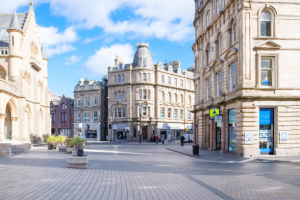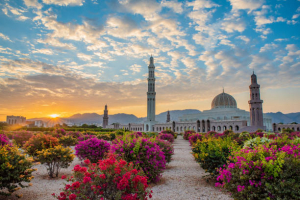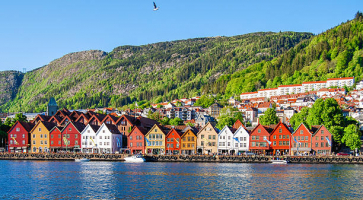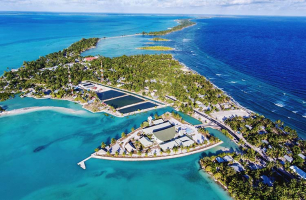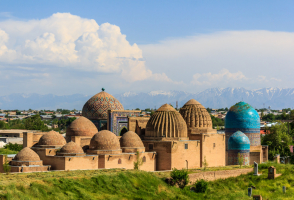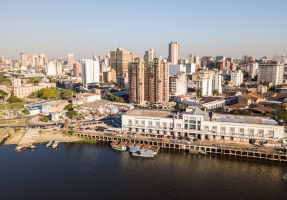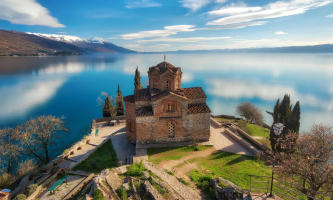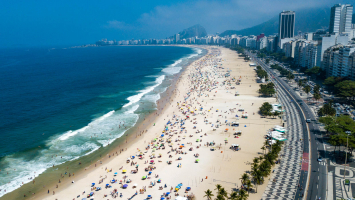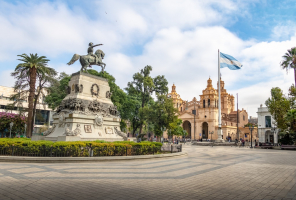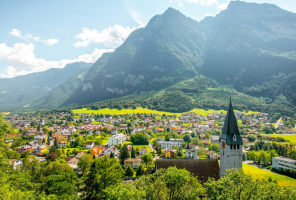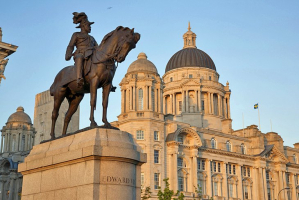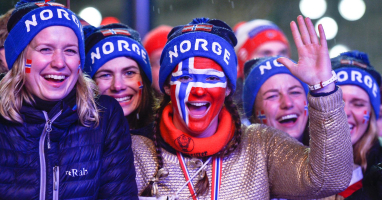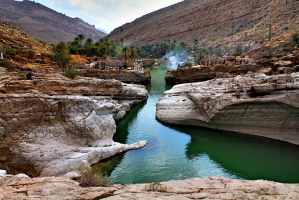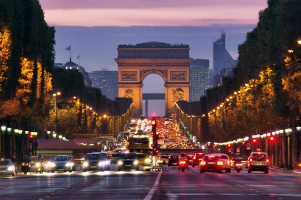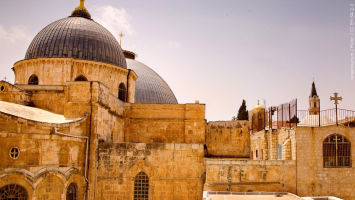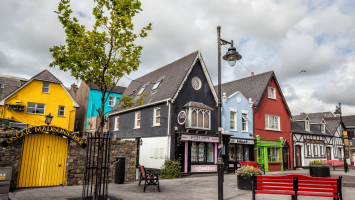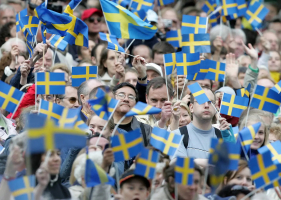Top 10 Reasons to Visit Plovdiv
Plovdiv's history dates back to 6000 BC, making the city nearly 8000 years old! But this unique city's rich historical history is not kept up in a museum - ... read more...just the reverse. It can be found virtually everywhere in town and is one of the primary reasons to visit Plovdiv. Despite recent modernization, Plovdiv has maintained a wonderful balance between being a burgeoning European cultural capital and a historic city proudly carrying its cultural legacy. Let's discover the best reason why you should pay a visit to this place.
-
Plovdiv is Bulgaria's second-largest city, located on the banks of the Maritsa River in the ancient region of Thrace. Plovdiv is Bulgaria's cultural capital and the European Capital of Culture in 2019. It is a vital economic, transportation, cultural, and educational hub. In 2016, Plovdiv became a member of the UNESCO Global Network of Learning Cities. Plovdiv has a strong claim to be Europe's oldest continuously inhabited city. While summarizing 6,000 years of apparent history is difficult, one clear highlight is the massive, partially discovered Roman stadium beneath the main thoroughfare.
Only ten paces away, the 600-year-old Dzhumaya Mosque continues to serve Turkish families who remained when Ottoman authority ended. Plovdiv's old town is ideal for a leisurely evening stroll, with its meandering cobblestone lanes and exquisite revival-era homes. The ruined stronghold of Nebet Tepe commands the heights above the ancient town. The original settlers on this location were Thracian tribesmen, who erected a fortification that was later expanded by Macedonians and eventually Romans. When the Ottomans expanded their imperial borders beyond Plovdiv, they partially dismantled the stronghold to prevent Bulgarian rebels from using it; yet the remnants that remain are magnificent, especially at night.
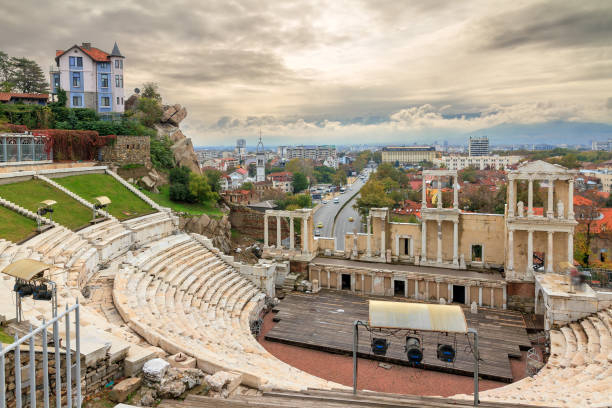
istockphoto 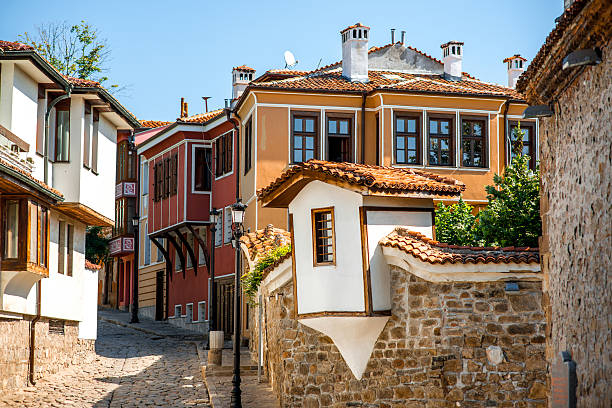
istockphoto -
The Western Thrace wine area - one of Bulgaria's most recognized wine regions and the wine region that surrounds the town of Plovdiv - is home to some of the top boutique wineries in the country. Western Thrace is the origin of one of the primary local types, Mavrud, which can be found in practically every winery's tasting menu. This journey will take you to Plovdiv, Europe's oldest continuously inhabited city. Experience the colorful atmosphere of Plovdiv and be transported back into the lengthy and turbulent history of Europe's oldest living city and one of the world's oldest. Witness the remnants of long-gone civilizations that once held Plovdiv as their stronghold.
Everyone has left their stamp on Plovdiv, including the Thracians, Romans, Byzantines, Greeks, Ottomans, Slavs, and Bulgars. On every street corner, fatty cheese-filled pastries called banitsa are sold, which are best washed down with boza, a wheat-based malt drink. Tarator, a cool soup of yoghurt, garlic, and dill, is delicious on a hot summer day, as is shopska salata, a salad of tomato, cucumber, onion, parsley, and shredded sirene cheese. This hardly scratches the surface of what Plovdiv has to offer. Pavaj is a tremendously popular local favorite, serving a variety of less typical regional dishes as well as an a la carte menu.
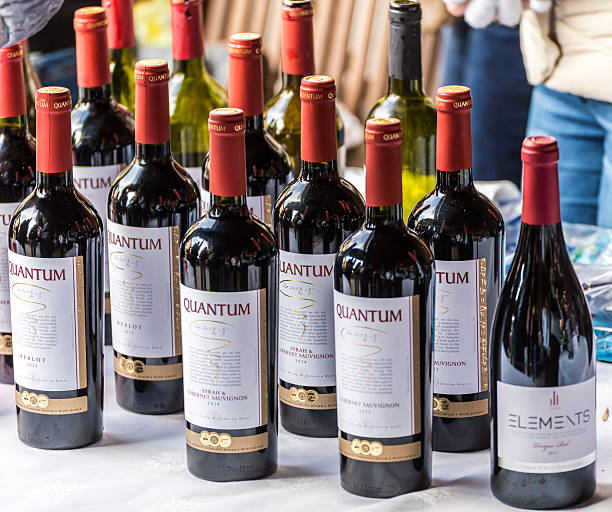
istockphoto 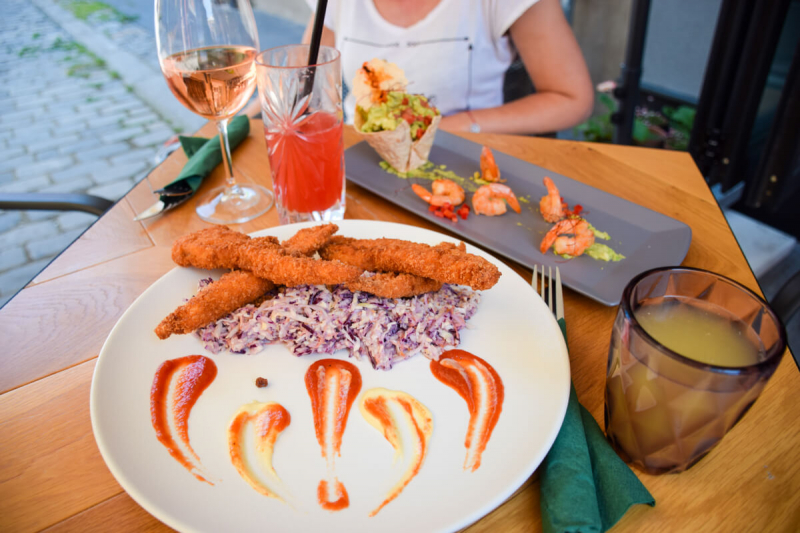
bulgarianonthego.blog -
Plovdiv has created and maintained its own philosophy for over 6,000 years, incorporating Epicureanism and other key philosophical movements. Some refer to it as a way of life, while others regard it as a serious business. Despite its vast history, it has only been moulded and developed in the last ten to fifteen years. Aylyak's philosophy is a distinct Plovdiv state of mind. The term is derived from the Turkish word 'aylak', which means idle. To be aylyak is to be utterly calm, undisturbed by external demands, and open to the pleasures of life. Aylyak isn't just a fleeting emotion for Plovdivians; it's a way of life. A Tuesday morning coffee break, for example, is not uncommon to evolve into a wine-fueled lunch that consumes the remainder of the day.
Aylyak may be experienced in Kapana with a craft beer or wine and a bite to eat, or in the recently opened Aylyakria with long calm afternoon chats with your friends. Play dice in the Old Town, hike to Nebet Tepe and watch the world go by below, attend a summer movie, or simply read a book and relax in the afternoon sun. When told that it's a weekday, the real Plovdivian will merely shrug and smile, saying, "I'm feeling aylyak today". Work is viewed as a means to an end rather than a value in and of itself, and residents view life as something to be enjoyed as much as possible. This feeds into the atmosphere of the city, and its perhaps why so many visitors feel more relaxed than usual as they wander through its streets.
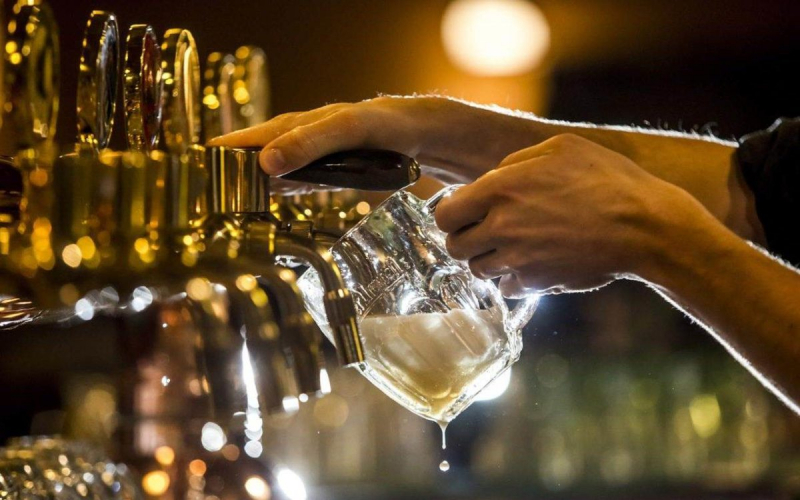
travelbulgaria.news| 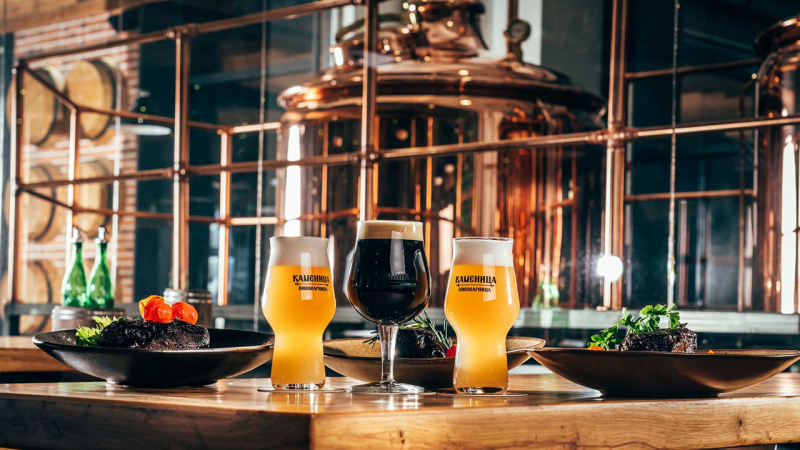
plovdivcitycard.com -
For both natives and foreigners, Plovdiv is an excellent destination to live and visit. There are many young individuals who are creating a community for those who are interested in technology, innovation, and alternative lifestyles. The city includes trendy sections and several co-working places, making it great for remote workers who wish to interact and meet new people. There are several options for locations to visit as well as pubs and restaurants to dine and drink in. If you enjoy creative hobbies or art, Kapana is a popular neighborhood to visit.
Although it is a wonderful choice for young people, it is also an outstanding alternative for seniors and expat families. The city has a variety of serene and soothing neighborhoods where you may appreciate nature's beauty and a quiet lifestyle. Furthermore, everything in Plovdiv is within walking distance. Even at peak hours, you may drive from north to south or east to west in less than 20 minutes and find all you need for your daily life.
istockphoto 
istockphoto -
When visiting a new city, the first thing you'll want to do is determine its safety. Plovdiv is not known for its high levels of crime or unlawful activity. In general, it is a safe city where visitors and expats may feel at ease. The city has an unusually low rate of muggings, robberies, and physical assaults. According to statistics, Plovdiv is 92% safe for walking alone during the day and 65% safe for walking alone at night. This makes the city far safer than other big European cities where crime is prevalent. However, there is a risk of vandalism and theft, particularly in less developed and poorer neighborhoods in or surrounding the city.
Only the capital has a subway, which is far quieter than in most other European capitals. Plovdiv is best explored on foot or by bus. Only at rush hour do you see a crowd (07-09 am and 5-6:30 pm). Then there are pickpockets who prey on the throng and the lack of attention in crowded transportation. Nothing to worry about if you keep your handbag in front of you. If you wish to avoid taking public transit or cabs, we recommend staying downtown. Some major hotels, as well as small rooms and suites, are within walking distance. When vacationing in rural places away from hotels, it is a good idea to familiarize yourself with the area ahead of time.
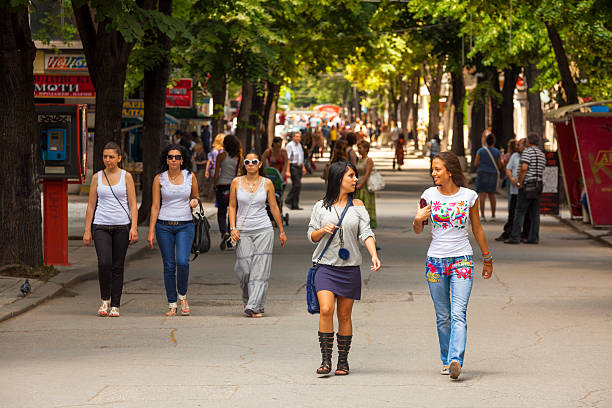
istockphoto 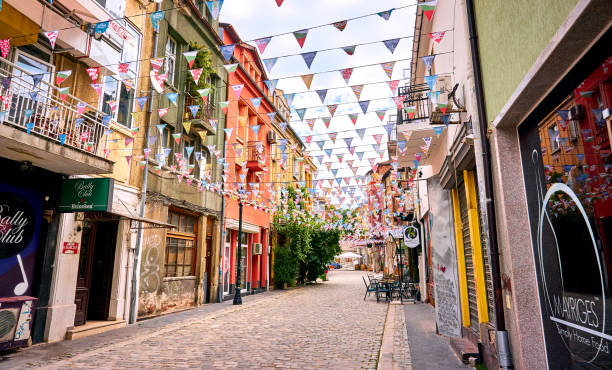
istockphoto -
Summers in Plovdiv are beautiful, with lots of sun and warm temperatures. Winter is also wonderful if you're prepared to deal with cold weather and, yes, snow. Plovdiv does have snow throughout the winter, notably in January and February. Temperatures might fall below 10°C, causing increased traffic congestion, probable delays in public transit, and a lot of puddles and slush on the streets. Of course, there's a bright side to it: snowy Plovdiv is a breathtaking sight!
Plovdiv's Old Town is one of the finest reasons to visit the city at any time of year, but the city's old Bulgarian architecture looks especially stunning when covered in snow. Set aside some time to explore these magnificent streets and lanes and see what you may uncover hidden away! Some trips are only available seasonally, but not the Free Plovdiv Tour! This fantastic walking tour lasts approximately three hours and includes the most essential sections of the city. It is available every day of the year (even holidays!). To navigate Plovdiv's cobblestone streets, wear comfortable shoes.
The Plovdiv German Christmas Market takes place every year at Stefan Stambolov Square. This holiday festival runs from the end of November until the 25th of December (though this date may change each year). If you're in Plovdiv over the Christmas season, you'll have plenty of time to spread some seasonal happiness!
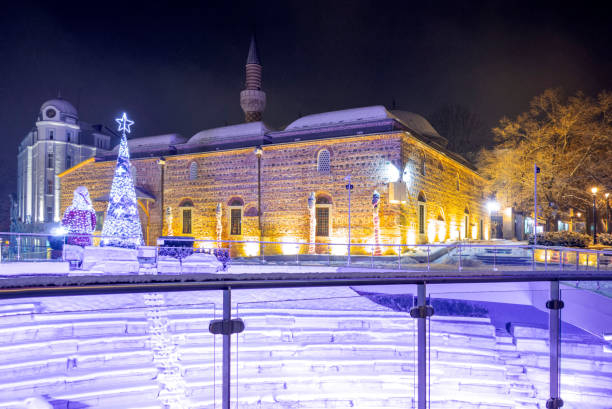
istockphoto 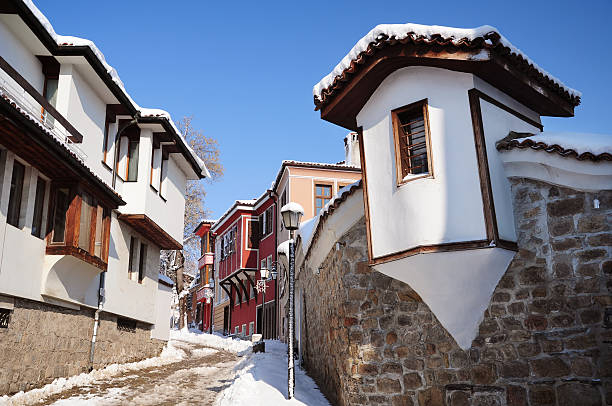
istockphoto -
Plovdiv's main thoroughfare is completely pedestrianized and stretches for roughly 2 kilometers. The nearby Kapana district, next to the main street, is surrounded with pleasant facades from the early twentieth century. The area is brimming with award-winning cafés, restaurants, and designer goods stores. The Main Pedestrian Street in the city center is without a doubt the locals' favorite spot for walking, shopping, dining, drinking, and sightseeing. On warmer days and nights, the Boulevard (Europe's longest pedestrian street) is packed with people mingling and having fun with friends and family.
The majority of Plovdiv's major attractions are concentrated in the city center and are easily accessible from the main street. From there, you may enter Tsar Simeon's Garden, explore the Old Town, Dzhumaya Square, and view the Roman Stadium, Forum, and Ancient Theatre. Along the Boulevard, you can also discover many businesses selling prominent foreign brands as well as traditional, genuine Bulgarian souvenirs.
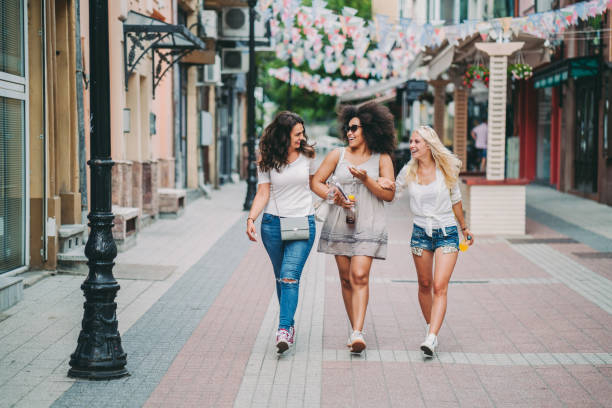
istockphoto 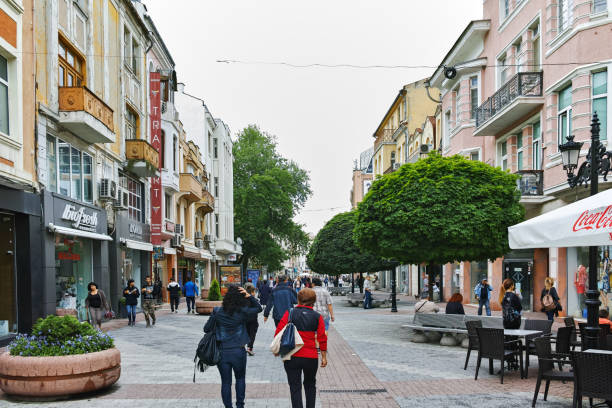
istockphoto -
Plovdiv's old theater was established in 90 ADS, when the city was known as Philippopolis, an important Roman border town. Nobody knew until the 1970s that a whole Roman theater lay dormant beneath one of Plovdiv's hills – but after a landslide revealed it, it was skilfully restored to its former glory. The theater frequently hosts operas, plays, and even rock concerts. Ticket rates are normally extremely low, and it's incredible to believe that the marble benches were originally used about 2,000 years ago.
The theater frequently hosts operas, plays, and even rock concerts. Ticket rates are normally extremely low, and it's incredible to believe that the marble benches were originally used about 2,000 years ago. Due to a landslide, the theater was finally discovered in the early 1970s. This resulted in a significant archeological excavation, which included the removal of approximately 4.5 m of soil covering what had been concealed by the landslide. The restoration of the Roman theatre in Plovdiv is regarded as one of the Bulgarian Conservation School's crowning achievements. The theatre is one of several Roman Empire-era structures that have been survived in Bulgaria. In the theatre, there exist various steles and wall inscriptions in Byzantine Greek.
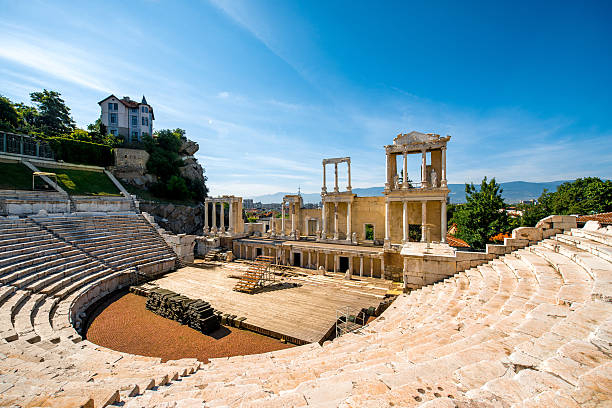
istockphoto 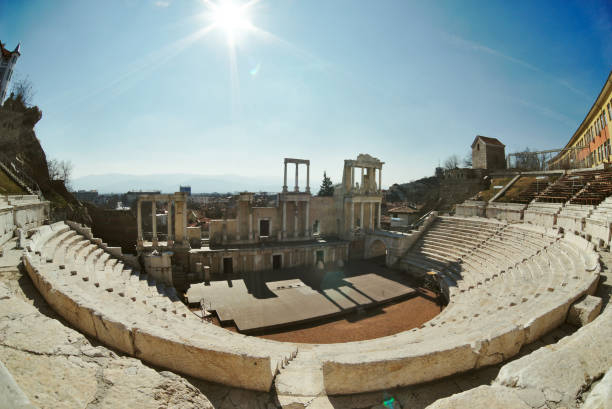
istockphoto -
The Stara Planina, or Balkan Mountains, loom enticingly over the northern horizon, while the verdant Rhodopes to the south are closer and possibly more lovely. These mountains can be reached by automobile in about 15 minutes and provide limitless chances for hiking, cycling, and village hopping. Asen's Fortress, located just 15 miles from Plovdiv and perched dramatically on a clifftop in the Rhodope foothills, is an impressive medieval structure that has been successively occupied and expanded over the years by Byzantines, Crusaders, and finally in its current form by Bulgarian Tsar Ivan Asen II in 1231.
The mountain range is named after the terrestrial ecoregion Rodope montane mixed forests, which is part of the temperate broadleaf and mixed woods biome and the Palearctic domain. The region is known for its karst landscapes, which feature deep river gorges, enormous caverns, and unique sculptured shapes, such as the Trigrad Gorge. The western sections of the range include a large portion of Bulgaria's hydroelectric resources. A variety of hydro-cascades and dams are utilized for energy generation, irrigation, and as tourist attractions. There are also the hydroelectric power stations of Thisavros and Platanovrysi in Greece. Ancient Thracian ruins such as Perperikon, Tatul, and Belintash, as well as medieval castles, churches, monasteries, and charming villages with classic Bulgarian architecture from the 18th and 19th centuries, may all be found in the Rhodopes.
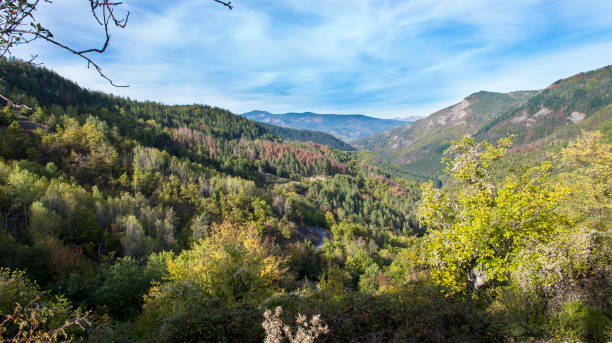
istockphoto 
istockphoto -
Kapana district is located between the Taksim and Nebet hills, northeast of Dzhumaya square. Its name translates to "The Trap" in Bulgarian, which is precisely what you will encounter. Not simply because of the narrow meandering alleyways that begin and terminate in unexpected places, intersect and join in a veritable cobblestone labyrinth. It's more about the ambience of this city, which has artisan stores, art galleries, pubs, restaurants, and street art on every corner. True magnetism draws you in, and once it has your attention with flags hung between the homes, a random picture on a wall, or a coffee shop with cushions put out on window frames outside, it won't let you go...At least not until dusk descends on the neighborhood, transforming it into a tangle of lights, shadows, and nightlife noises.
In recent years, the government has pushed property owners to rehabilitate the deteriorating structures, and the neighborhood is now a maze of hipster cafés, flower shops, and jazz bars. There's no need to seek any farther for a world-class espresso, artisan beer, or beard. Many of the city's musicians and artists congregate at Kapana in the evenings, mixing with students and young professionals. Rickety chairs spill out onto the cobblestone alleyways, and smokey wine taverns are packed with affluent patrons
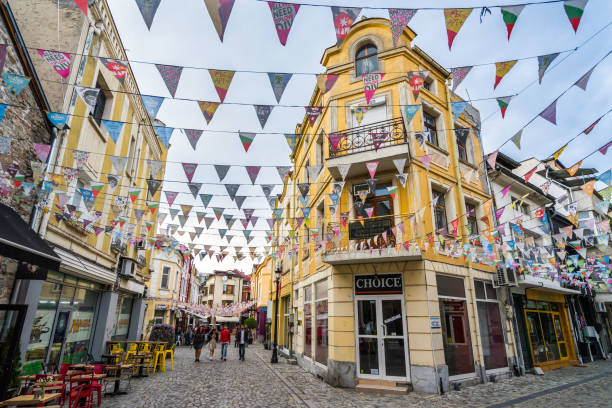
istockphoto 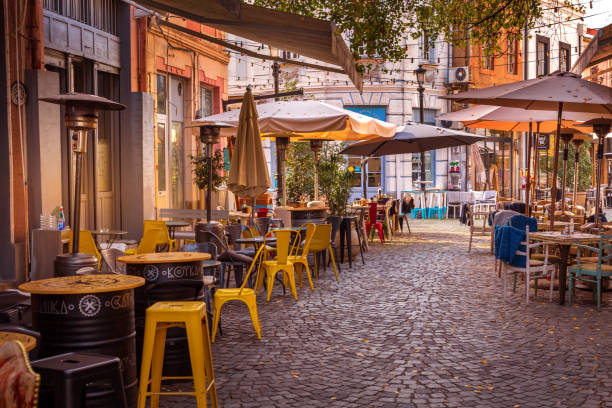
istockphoto












